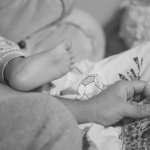
23 Jan 9 Misconceptions about Ovarian cancer
February 2020 is Ovarian Cancer Awareness Month and Dr Katelyn Lee from PRP Imaging busts some common misconceptions when it comes to the cancer, which is the 10th most diagnosed cancer in Australian women.*
Ovarian cancer is actually one of the more deadly female cancers, in a large part, because once a diagnosis is made the cancer is usually at an advance stage, and with all cancers early detection is key to the overall prognosis and survival rate. While we generally don’t hear as much about ovarian cancer in comparison to cancers such as breast and cervical, given its prevalence in Australia (affecting about 1,400 Aussie women annually**), it’s definitely something that all Australian women should be aware of.
1) Pap smears accurately screen for ovarian cancer
FALSE – There is currently no early detection for ovarian cancer. Pap smears test for abnormal cells which may be a sign of cervical cancer, which originates in the cervix, whereas ovarian cancer originates in the fallopian tubes or ovaries.
2) There are different types of ovarian cancer
TRUE – There are three main types of ovarian cancer – epithelial, germ cell and stromal tumours. Epithelial is the most common form which arise from the cells lining the ovary or fallopian tube, the two rarer types are germ cell tumours which arise from cells which produce eggs and stromal tumours which arise from the supporting tissues within the ovary.
3) BRCA1 and BRCA2 gene mutations can increase the chance for ovarian cancer
TRUE – While most people are familiar with the implications of a BRCA mutation for breast cancer, the mutations also notably increase the risk of ovarian cancer.
4) I haven’t had children, so I can’t get ovarian cancer
FALSE – It is argued that women who have never had children are at an increased risk of developing ovarian cancer, this is because the more eggs a women produces, the higher the risk as there is more estrogen, however, during pregnancy a woman doesn’t have a period for nine months.
5) Endometriosis can increase the risk of developing ovarian cancer
TRUE – Women who have endometriosis, are at an increased risk of developing epithelial ovarian cancer – this is mainly due to the iron in the fluid found in the endometriotic cysts, which, can promote stress and as a result can turn ovarian cysts malignant.
6) Ovarian cancer is often referred to as the ‘silent killer’
TRUE – This is true as the symptoms of ovarian cancer can often be mistaken or dismissed for typical ‘normal’ female issues – however, if the symptoms are persistent and frequent they shouldn’t be overlooked. Symptoms can include persistent bloating, stomach pain, difficult eating or a feeling of fullness and the frequent need to urinate.
7) There are different ways to diagnose
TRUE – If cancer is suspected, a pelvic ultrasound is usually the first port of call. A pelvic ultrasound is performed in two parts. The first is using the ultrasound beam through the abdominal wall. A transvaginal approach is then performed if possible as this gives more detailed information of the uterus and ovaries over ultrasound through the abdominal wall.
8) Ovarian cancer usually affects older women
TRUE – Most ovarian cancer (Epithelial) is diagnosed in women over the age of 50. However, while rarer, germ cell ovarian cancer is typically diagnosed in adolescents and women under 40.
9) Genetic factors are most important when it comes to the risk of developing ovarian cancer
FALSE – Like any cancer, it can strike anyone, however, when it comes to ovarian cancer most women who are diagnosed do not have a family history of the disease.
Further Information
* Ovarian cancer statistics in Australia
Dr Katelyn Lee MBBS BSC (HONS) (PRP Imaging) graduated medicine from the University of New South Wales with honours. She undertook radiology training at Concord Hospital and then completed a fellowship in breast imaging at Royal North Shore Hospital and BreastScreen. Katelyn is a general radiologist with special interests in breast, body and oncology imaging.




